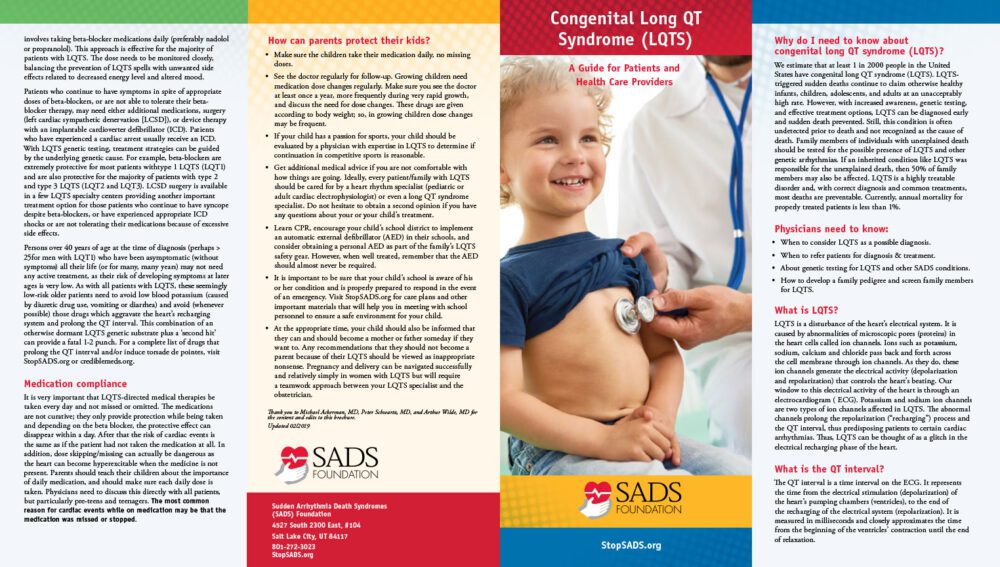Long QT Syndrome (LQTS)
We estimate that at least 1 in 2000 people in the United States have congenital long QT syndrome (LQTS). Nearly half of those with LQTS NEVER have a symptom!
LQTS is a highly treatable disorder and, with correct diagnosis and common treatments, most deaths are preventable.
About
LQTS is a disturbance of your heart’s electrical system. It’s caused by abnormalities of microscopic pores (proteins) in the heart cells called ion channels. You can think of LQTS as a glitch in the electrical recharging phase of the heart.
LQTS is an inherited genetic condition, so if someone in your family is diagnosed with LQTS, it is extremely important that the rest of your family be tested for the syndrome.
Download our new Long QT Syndrome Fact Sheet that helps explain your condition to family, friends, and your community!
Download LQTS Fact Sheet
Symptoms
Nearly half of those with LQTS NEVER have a symptom. However, if the LQTS heart “spins electrically out of control” in its trademark cardiac arrhythmia (called torsade de pointes), sudden, temporary, loss of consciousness (syncope) is the most common event.
It is important to discuss any of the following events with your doctor:
Fainting or seizure during exercise, excitement or startle.
Family history of unexplained syncope, unexplained seizures, or sudden death in a young person.
Diagnosis
Your doctor may suspect LQTS based on your personal story, your family story, and careful examination of your ECG. If your story is suspicious, a QT exceeding 470 ms in males and 480 ms in females is sufficient evidence for a diagnosis of probable LQTS, assuming that medications which prolong the QT interval or other QT-prolonging medical conditions have been ruled out.
You may come across the following tests when being diagnosed with LQTS:
- Electrocardiogram (ECG or EKG) – usually more than one
- A treadmill stress test with an ECG
- Remote ECG Monitoring with a patch, Holter monitor, or event monitor
Treatment
If you’re symptomatic, you should receive treatment, and most children and young adults should be treated even if they do not have symptoms.
The usual treatment involves taking beta-blocker medications daily (preferably nadolol or propranolol). This approach is effective for the majority of those with LQTS. It is very important that the medication be taken every day, and not be missed or omitted.
If you continue to have symptoms despite appropriate doses of beta-blockers, or are not able to tolerate your beta- blocker therapy, you may need additional medications, surgery (left cardiac sympathetic denervation [LCSD]), or device therapy with an implantable cardioverter defibrillator (ICD).
You should also avoid medications that prolong the QT interval.
Click here for a complete list of drugs that prolong the QT interval.

Community
Get Support
Resources

Long QT Syndrome Brochure

Long QT Syndrome Brochure in Arabic (متلازمة الفترة )

